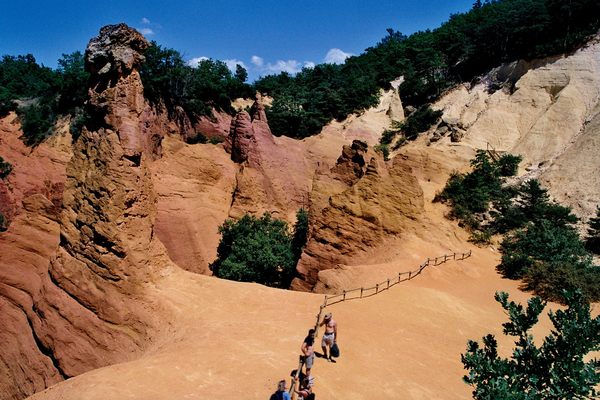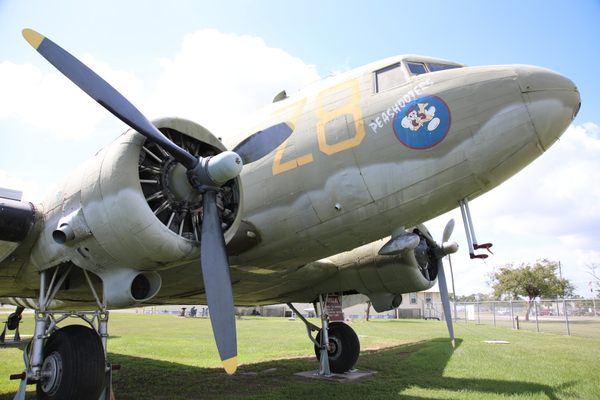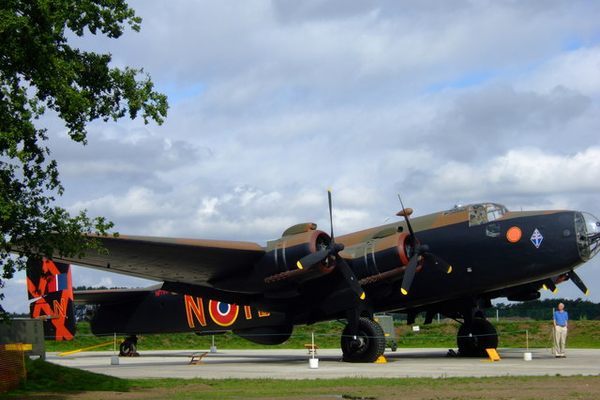The Wellington Wreck of Simiane-la-Rotonde
A little known pile of scraps and plaques mark the grave of a downed RAF bomber.
Hidden deep in a valley of the Alpes-de-Haute-Provence in Southern France, is a peculiarly sculpted collection of rusted metal. Miles from the nearest town, and long since left to the elements, it is virtually unknown. Surrounding the remnants of twisted metal are five small stones, each simply marked with an English name. Four are placed near the strange metal structure, whilst the fifth is placed some 25 feet or so behind.
If anyone came across this peculiar site in the middle of the forest and had a passing knowledge of aviation, they might see that the stone markers are roughly the dimensions of a large airplane. For hidden in this valley are the remains of a Wellington bomber of the Royal Air Force, that crashed here in 1944. The stones mark the places where the crew burned to death, in a story involving the French Resistance, a famous surrealist poet and an obscure mountain town.
In the early hours of May 10th, 1944, a squadron of 20 Wellington bombers took off from Foggia in Italy to attack an armaments factory at Portes-les-Valance, a town about 130 miles north of Marseille. Here, the Germans were manufacturing the feared V1 flying bombs that continued to devastate London. During the raid, bomber LP180 was critically hit by anti-aircraft fire. The pilot, Flying Officer John Huggler, aged just 29, desperately sought somewhere to land.
The same evening, 100 miles to the south, a small, highly secretive cell of the French Resistance was preparing for a parachute drop of weapons and supplies from England. This particular group operated out of the small town of Simiane-la-Rotonde under the code name “le Abbateur”, or “Slaughterman.” The group was run under the watchful eye of a man codenamed Captaine Alexander. In reality, Captaine Alexander was the famous surrealist poet, Rene Char.
By the time France surrendered in 1940, Rene Char was a well known poet. Having moved from Provence to Paris in the 1920s, he was a notable member of the surreralist movement, and his poems were often published alongside works by Picasso and Kandinsky. Joining the French Resistance in 1940, Char was responsible for Charles de Gaulle’s “Section for Parachutes and Landings” in Provence.
Simiane-la-Rotonde has remained virtually untouched for centuries. Perched upon a high hill in the Luberon mountains, it is characterized by its ancient stone houses, narrow winding streets that lead to a 12th century church and a dungeon, and the fields of lavender which surround it. Simiane-la-Rotonde’s remoteness and terraced tall houses full of hidden basements made it an ideal base for part of a Resistance network in Provence.
On the night of May 10th, whilst Huggler’s Wellington was flying en route to Valance, Rene Char’s network in Simiane-le-Rotonde gathered around a radio, and heard a seemingly anonymous message broadcast from the BBC in London. The obscure message relayed that “the shooting star will return” followed by the even more cryptic “Arnold sells goats.” Unintelligible to the Abwehr, Germany’s intelligence service, the code told the resistance group that there was to be a drop that night, of vital weapons and supplies.
The Slaughterman group already had a well-used drop zone in place, in the the hills overlooking the small hamlet of Chavon, down in the valley from Simiane. At midnight, seven members of the cell stealthily made their way to the drop zone, a hidden plateau field of lavender and blackberry bushes deep in the valley. Here, they lit lanterns to signal the drop zone to the Royal Air Force, and lay in wait for the parachute drop, whilst keeping on the alert for German soldiers.
At 2 AM, they heard the drone of propellors and made ready for the drop. For the crew of the stricken LP180, ravaged by anti-aircraft cannon, the lit beacons emerging in the night were a godsend. Thinking it was a resistance landing strip, Huggler tried to land the doomed Wellington, but flying low, hit the valley trees at full throttle.
Hiding in the bushes, Resistance member Edme Carritier described a sickening, “inhuman roar, a thud as the earth trembled beneath our feet, then silence, and then a glimmer” followed by a “lightening flash and gigantic flames.” Racing to the inferno enveloping the bomber, bullets from the planes guns ignited and started ricocheting around the Slaughterman group as they tried in vain to save the Wellington’s crew, but were beaten back by the intense heat and flames.
Early the next morning, the group tried again only to find in the cockpit four bodies charred beyond recognition, even their ID tags had melted. Further back, where the rear gunner was seated, they found a “very young face, turned skyward with dislocated legs.” His ID tag was intact and said Eric Howell. By this time, Rene Char had arrived at the crash site. With the huge explosion surely detected by the Germans, the bodies were taken from the plane, Howell’s wrapped in a parachute, and buried in the woods a few feet away. Larger parts of the wrecked plane were hidden in the woods, to prevent the Germans from discovering the Slaughterman’s group drop site. Under constant surveillance from the Gestapo and the Milice, the French Vichy collaborationist government’s secret police, silence and secrecy was paramount to survival.
After Provence was liberated, the Royal Air Force moved the bodies to a military cemetery in Mazargues, near Marseille, where they remain to this day. After the war ended, a local artist gathered some of the wrecked plane and created the unusual metal structure. A stone memorial was placed at the crash site
Today, the hamlet of Chavon consists of a dozen homes and farms. At the far side of the village is a weathered wooden sign pointing to a trail leading down into the valley. It simply says “l’avion.” The trail lasts for around three miles, steadily descending below the tree line. Halfway along the trail is a flat plateau, where another sign says “Abbateur” and a quote from Rene Char, “Resister c’est esperer.” This field was the original spot where his resistance network would risk their lives to receive nighttime drops from England and where on the fateful night of May 10th, they lay in wait, their lanterns spotted in the distance by the doomed crew of LP180.
Further down in the valley lies the silent memorial and collection of incinerated British steel, cloth and metal that had once been the Wellington bomber. Rusted bullet casings, strips of burnt cloth, and twisted metal are all that remains, along with a plaque giving the name of the young men who died horrible deaths there;
John Huggler, Pilot, 29
Walter Jackson, Bomber
Harry Lane, Navigator, 28
Neville Green, Radio Operator, 21
Eric Howell, Rear Gunner, 22
There is also a simple plaque saying, “a British Wellington bomber of the Royal Air Force crashed here on 10th May, 1944. All 5 members of the crew were burnt to death. This memorial spot reminds us of a sombre incident in the war against barbarism and Nazism.”
Know Before You Go
Park your car at N44.02507° E5.56250°. Signs will lead you to the memorial at N44.02933° E5.56533°






























Follow us on Twitter to get the latest on the world's hidden wonders.
Like us on Facebook to get the latest on the world's hidden wonders.
Follow us on Twitter Like us on Facebook